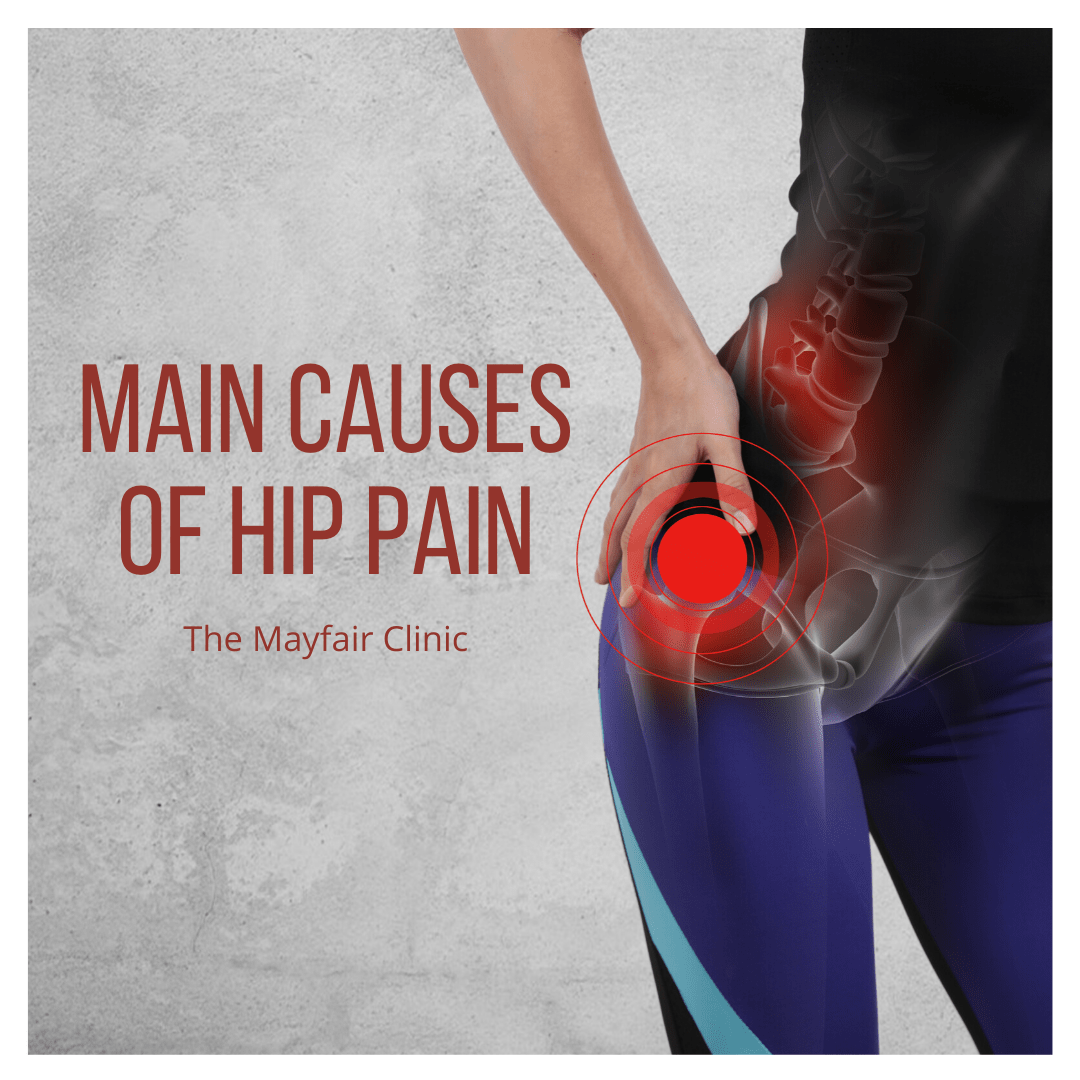Hip pain is a common complaint that we see in the clinic, but very often the description of hip pain can be misconstrued with a back problem, without the patient necessarily realising the distinction. Correctly identifying the part of your body that’s experiencing a problem, is going to be the most helpful for your practitioner to be able to make sure the right testing is done and form a diagnosis. Right now, virtual consultations are going to be more common than visiting a practitioner in person, so it’s important you’re able to accurately know what’s going on so you can inform your practitioner.
What Is Hip Pain?
Traditional and genuine hip pain generally affects the front of the pelvis or just to the side. Straining the hip joint itself through doing certain movements you’re not used to, or warmed up to might cause this pain, but in the majority of cases it’s likely to be wear and tear through the hips. This type of problem can occur over time, and can cause a loss of extension in the hip. Loss of extension essentially means you might find it difficult for your leg to extend backwards and you’ll likely have pain when doing this. With this type of problem, without a proper stretching program, you may notice that your range of movement gradually worsens as time goes on. This happens because when you have an initial restriction of movement, synovial fluid cannot bathe the joint, and therefore we just get more and more stiff as time goes on.
If the problem is genuinely a hip problem, stretching is going to be helpful for you to restore your range of movement in the joint. Visiting our Back In Shape membership area at www.backinshapeapp.com and signing up for free will provide you with gentle stretches you can do to help with getting more range of motion. If the hip problem involves a labral tear, being conservative with your stretching is vital to rehabilitate, as is going slowly with any kind of rehabilitation. Too much too soon will be detrimental to resolving this type of problem. Sadly, walking is not going to be enough to rehabilitate, although it may be a step in your rehabilitation process it’s not going to give you enough extension to be able to stretch out the joint. Equally, during the rehabilitation process you’ll want to avoid any kind of high impact exercises, such as jumping or bounding. You may also want to avoid running, unless this is something that you did before, in which case you can just make sure to stretch after your run.

Join The Back In Shape Program
A full protocol to support you get out of back pain in the short term and then rehab safely and effectively to deal with the issue for the long term.
When Is It Not A Hip Problem?
If your pain is affecting the back of the hips, the glutes or the buttocks, this no longer becomes a hip problem and is instead a lower back problem. This is a very easy mistake to make, after all it may be more uncomfortable to say you’ve got pain in the buttocks than it is for the hips, but it’s an important distinction to make if that’s where you’re being affected. Degenerative changes in the lower back, or issues like disc bulges or herniations can all cause pain in the buttocks and glutes. If your hip pain is in fact lower back pain, our Back In Shape membership area is going to be a great rehabilitation tool for you to use at home at this time. For this type of problem, improving the flexibility in the hip as well as the surrounding glutes and hamstrings. It’s also important to start improving the strength of your core and lower body, so that your hips are appropriately supported. To sign up, visit www.backinshapeapp.com.
We hope you found today’s article on hip problems helpful! If you have any questions at all about today’s topic, please feel free to get in touch with us either via email at info@themayfairclinic.com, through our social channels, or by tuning in to our daily livestreams on Facebook and YouTube. For rehabilitation advice on hip and lower back problems, do make sure to sign up to our membership area as these should be applicable for you, but if you do have any concerns about your specific problem please do feel free to get in touch with us directly!
Contact Us.
Email Us
info@themayfairclinic.com
Call Us
0203 947 32 22
Clinic Address
4 Cavendish Square, London, W1g 0PG.